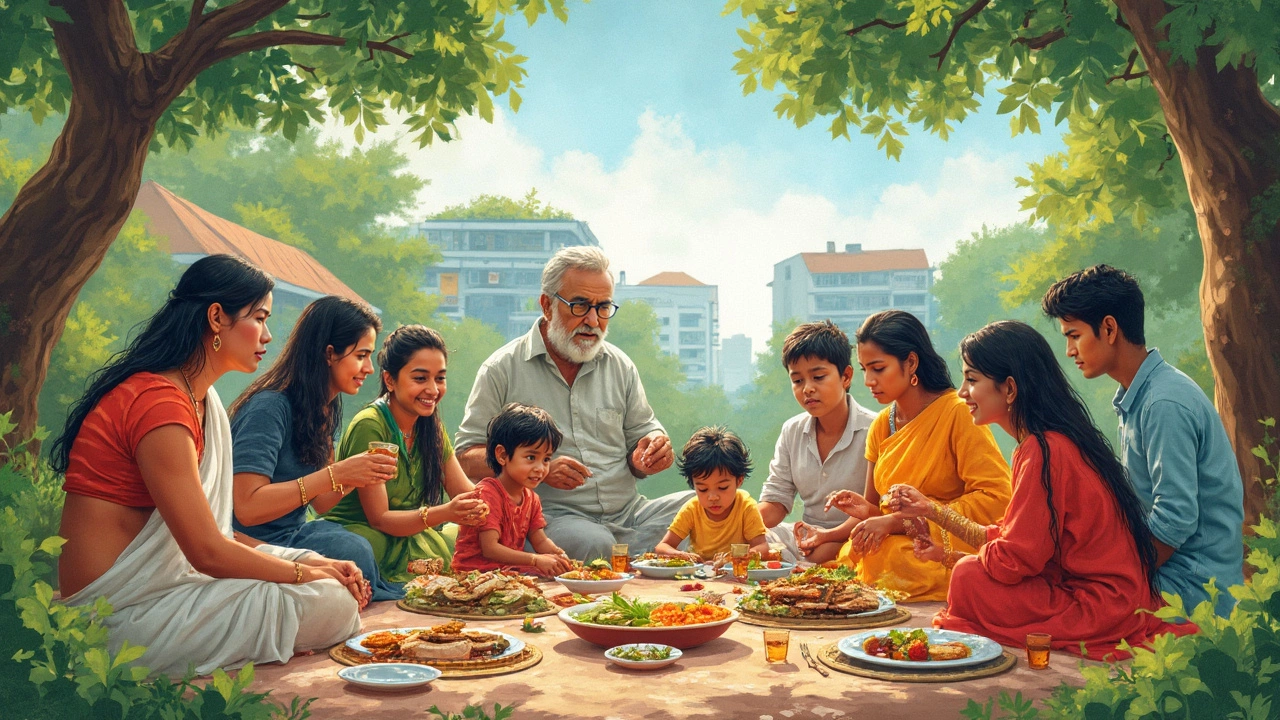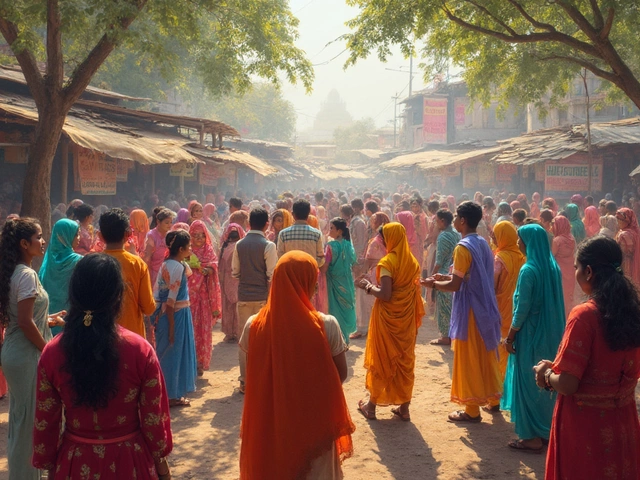Ever wonder why some neighborhoods feel fresher and just plain happier? Maybe you’ve seen those little gardens popping up where empty lots used to be, or noticed solar panels glinting on roofs as you drive by. That’s not just a trend—it’s the heartbeat of a green community.
A green community isn’t just about living near a park or tossing your cans into the blue bin once a week. It’s about people—like you and me—getting together to make daily choices with the earth in mind. These choices can be simple, like sharing tools so everyone’s shed isn’t crammed with unused stuff, or way bigger, like investing in shared solar energy to cut down bills (and pollution) for everyone.
The cool part? You don’t have to join some exclusive club or be a hardcore activist to be part of one. Regular folks are starting small, like swapping out lawns for vegetable patches or organizing a monthly swap meet to keep clothes and toys in use longer. It’s not about being perfect; it’s about making steady, realistic changes that add up when a whole community gets on board.
- What Defines a Green Community?
- Key Actions and Everyday Habits
- Real-World Examples (And What Actually Works)
- Getting Involved: Tips for Making a Difference
What Defines a Green Community?
A green community is where people work together to lower their environmental impact. It’s right in the name: community. This isn’t just about a few eco-friendly habits; it’s a group effort that shapes how everyone lives, shares resources, and supports one another. The goal is to make daily life easier on the planet—and sometimes easier on your wallet, too.
So what actually makes a neighborhood or group a green community? Here are some signposts:
- Shared spaces that work for the planet: Things like community gardens, compost hubs, and tool libraries make sustainable choices the norm, not the exception.
- Energy smarts: Many green communities use renewable energy together, like a shared solar project powering homes, or work on group discounts for energy-efficient appliances.
- Waste less, waste smarter: It’s common to see easy recycling setups and frequent neighborhood repair days to keep stuff out of landfills.
- Walkability and shared rides: These places are designed so folks can walk or bike for most errands. You’ll find safe bike paths, regular carpools, or neighborhood EV charging stations.
- Support for local and planet-friendly businesses: Events often feature local farmers, makers, and services that value the environment as much as the customers do.
The push for green communities isn’t new. In fact, a 2023 report from the EPA found that neighborhoods focused on shared sustainability saw up to 30% less household waste and cut energy use by about 15% within three years. That’s a change you can see, not just read about.
| Key Feature | Typical Impact |
|---|---|
| Community Gardening | Up to 20% increase in local food production |
| Shared Solar Projects | Saves 10-15% on average annual energy bills per home |
| Tool Libraries | Reduces new purchases and cuts down waste from discarded tools |
| Neighborhood Composting | Keeps 200-500 lbs of food waste per household per year out of landfills |
None of these things happen by accident. Green communities get there by making smart, shared choices—and keeping things flexible so more people join in. Whether you live in a city apartment block or a small town, it’s the people and the effort they put in that set these places apart.
Key Actions and Everyday Habits
If you’re thinking about what really makes a green community work, it boils down to the everyday stuff. Talk is cheap, but actions—like what happens on a Tuesday night when you’re sorting your kitchen trash—make all the difference. So, what are folks actually doing?
- Recycling and Composting: Many green communities have group compost bins and simple guides on what you can and can’t recycle. In my area, composting shrank landfill waste by about 30%. That’s a big dent, especially when neighbors help each other get it right.
- Using Clean Energy: Rooftop solar is everywhere these days, but some neighborhoods go further—sharing solar power setups or joining local solar co-ops, which can knock energy bills down by 10–25% in the first year, according to data from the National Renewable Energy Laboratory.
- Community Gardens: Growing food together isn’t just cheaper—it knocks thousands of food miles off your dinner and makes produce more accessible for everyone. The American Community Gardening Association says gardens boost neighborhood engagement and can lower household grocery bills by up to $600 yearly.
- Smarter Transportation: Carpools, shared bikes, and even electric buses have popped up as cheaper, cleaner ways to get around. In Portland, community car pools cut daily car trips by about 12%, trimming traffic and CO2.
| Action | Typical Impact |
|---|---|
| Backyard Composting | Reduces household waste by about 25% per year |
| Switching to LED bulbs | Lowers lighting electricity use by up to 75% |
| Carpooling regularly | Saves an average of 2,000 lbs of CO2 per car annually |
| Using community gardens | Saves $500-600/year in groceries |
You don’t have to quit every habit cold turkey or swap your car for a bike tomorrow. Starting small—like adding a compost bin, riding with a neighbor, or joining a local food co-op—makes it less overwhelming. Swap stories, share what works, and watch the change actually start to stick. That’s where real progress happens.

Real-World Examples (And What Actually Works)
Green communities are popping up everywhere, from city blocks to small suburbs and even rural spots. Some work better than others, and honestly, the most successful ones keep things practical—using ideas and setups that regular people can stick to.
For starters, check out Freiburg, Germany. This city’s Vauban district is famous for being almost car-free. Instead, families bike, walk, or use easily accessible trams. Over 70% of the residents don’t own cars, which seriously cuts down air pollution and noise. It also makes the place feel safe and lively.
Then there’s Burlington, Vermont. This city gets 100% of its electricity from renewable sources (mainly wind, hydro, and solar), keeping its carbon footprint super low. Schools, businesses, and even the ice rink run on green energy. Not surprisingly, their energy bills are more stable and the whole city has become a go-to example for folks wanting to lower the environmental impact of their homes and jobs.
On a smaller scale, neighborhoods like Grow Community on Bainbridge Island, Washington show how co-housing and community gardens can turn boring subdivisions into super-efficient, neighbor-friendly hubs. Their zero-energy homes are insulated so well the heating bills almost disappear, and families share tools and common spaces instead of buying everything new. This kind of setup slashes waste and builds connections at the same time.
Here are some typical things you’ll find in thriving green community projects:
- Shared solar power (think co-ops splitting installation costs and benefits)
- Community gardens (with food going right from garden plots to dinner plates)
- Organized recycling and composting efforts
- Bike-share programs and carpooling networks
- Neighborhood tool lending libraries
The numbers back this up. Here’s a quick look at the kind of impact these choices have:
| Community | Key Action | Impact/Result |
|---|---|---|
| Vauban, Germany | Car-free streets | 70% less car ownership; lower air pollution |
| Burlington, Vermont | 100% renewable energy | Stable energy costs; big drop in local emissions |
| Grow Community, WA | Zero-energy homes | Super low utility bills; less waste in landfills |
Bottom line: these places aren’t magic. They just use a mix of easy-to-adopt habits and smart planning. People stick with it because it actually makes life easier—and honestly, more fun—when you share the effort with your neighbors. If you’re thinking about starting something similar where you live, look for ideas that fit your area and your neighbors’ lifestyle first. The best systems spread because they make sense, not just because they sound “eco.”
Getting Involved: Tips for Making a Difference
Getting involved in a green community doesn’t have to be complicated or expensive. Most folks start with small steps, and research shows that when a few people kick things off, others often follow. There’s real power in this—one study found that neighborhoods with active green groups saw recycling rates jump as much as 25% compared to those without.
Want to pitch in, but not sure how? Here are some ways to get started:
- Show up for local clean-ups: Even one hour picking up trash with Bram made me realize how much can get done quickly. Local parks and rivers always need an extra set of hands, and it’s usually a fun way to meet like-minded neighbors.
- Join or start a swap group: Instead of tossing out things—or buying new all the time—see if your community has a group for sharing tools, toys, or clothes. Bram pretty much grows out of everything in a year, so we swap his old jackets for someone else’s barely-used boots.
- Plug into existing green groups: Loads of towns have environmental clubs or online forums. It’s a lot easier to join one than start from scratch, and these groups often need help with simple stuff—posting flyers, making social media posts, or even helping out at events.
- Advocate for better options: Been annoyed over something like poor bike lanes or the lack of curbside composting? You’re not the only one. Team up with your neighbors and push for change by attending community meetings or starting petitions. Real talk: my friend’s block finally got bike racks after emailing their council five times in a month.
Here’s a look at a few common actions, how tough they are to organize, and the community impact based on what’s worked in real towns:
| Action | Effort Required | Impact on Community |
|---|---|---|
| Neighborhood Clean-ups | Low | 10-20% drop in litter found in public spaces |
| Tool/Clothing Swaps | Low to Medium | Saves families $200+ each year; cuts landfill waste |
| Community Gardens | Medium to High | Boosts local food access by up to 30% |
| Switching to Community Solar | Medium | Cuts household energy bills by 10%-20% |
| Advocacy for Green Projects | Variable | Can lead to permanent infrastructure (bike lanes, compost collection) |
Small, steady efforts bring actual results. Even if you’re the first one in your group of friends to suggest it, chances are, more people are ready to get on board than you’d think. If you try something out, let your neighbors know—it’s amazing how fast momentum builds when someone takes the lead.








